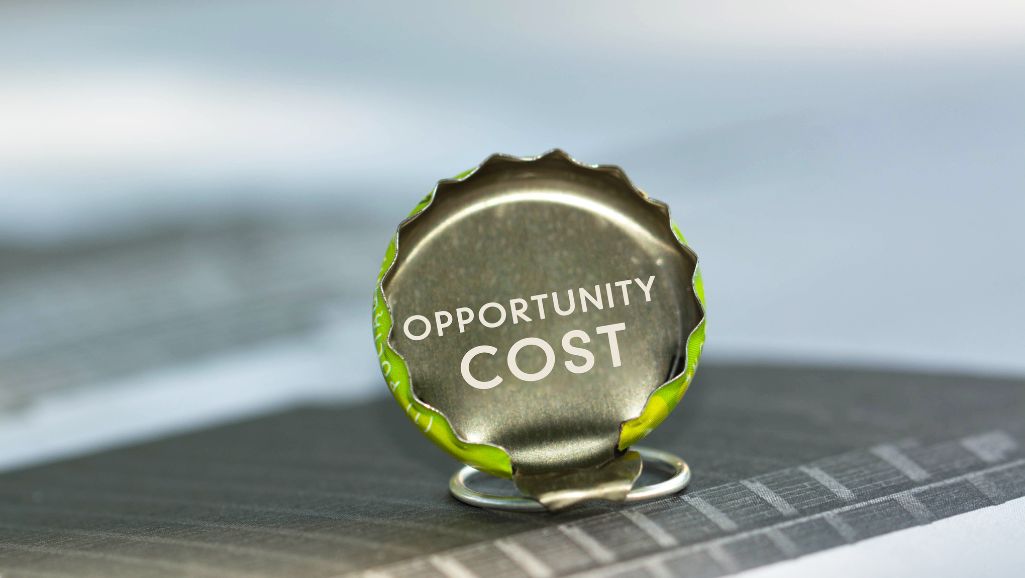Did you ever need to choose between two attractive choices, and it was hard? You could have been stuck between the idea of a vacation and using your money differently. In these times, you must think about what’s good for you now and what could occur in the long term. It is where Opportunity Costs and the Time Value of Money become relevant.
Understanding the Time Value of Money
The Time Value of Money (TVM) is a core financial idea that underscores the thought that money you own today is more valuable than the identical amount in the future. It is due to the earning potential of money when invested or saved. In essence, ₹1,000 today is worth more than ₹1,000 tomorrow.
TVM is based on two primary principles: compounding and discounting. Compounding refers to money growing over time when invested or earning interest. Conversely, discounting determines the present value of a future sum of money.
Let’s illustrate this concept with an example:
- Imagine this situation: Rohit holds ₹1,00,000.
- He can invest it in a savings account that adds 5% more each year or use it immediately.
- If he goes for saving, after one year, he’ll have ₹1,05,000 (₹1,00,000 + 5% interest). So, his money’s future value is ₹1,05,000.
- But if he spent the ₹1,00,000, he wouldn’t receive that extra ₹5,000 from interest.
- This is the Time Value of Money in action—the opportunity to earn more by delaying consumption.

Understanding Opportunity Costs
Opportunity Cost is another crucial concept in choices, especially when you have limited resources. It represents the value of the best alternative you don’t choose when deciding.
Let’s explore the two main types of Opportunity Costs:
1. Personal Opportunity Costs
Personal Opportunity Costs refer to the trade-offs individuals make in their lives. These costs are not always monetary but can be related to time, effort, and personal priorities.
For instance, consider a student deciding between studying for an important exam or attending a social event. If they choose to look, the Opportunity Cost is the missed social experience and the potential to strengthen social bonds. On the other hand, if they attend the event, the Opportunity Cost is the lower grade they might receive due to less preparation.
2. Financial Opportunity Costs
Financial Opportunity Costs involve individuals’ monetary trade-offs when allocating resources, such as money or capital. These costs are often quantifiable and represent the returns one could have earned if the resources were used differently.
Picture this: Priya has an extra ₹1,00,000. She’s thinking about clearing her high-interest credit card debt or putting the money into a stock market index fund that will give her 8% more every year. If she decides to pay off the debt, the Opportunity Cost is the chance to earn that 8% extra by investing the money instead.
Balancing Opportunity Costs and TVM
Opportunity Costs and the Time Value of Money are interconnected and play a significant role in financial decision-making.
Imagine this scenario: Ajay is considering whether to get a new car or stick with his old one. A new car would be more comfy and make him happier, but it also means spending money. The new car costs ₹10,00,000, and he intends to keep it for ten years. Although older and not as plush, his current car still works fine.
Here’s how you can analyse the situation using Opportunity Costs and TVM:
TVM Perspective: If Ajay invests ₹10,00,000 in a diversified investment portfolio instead of buying a new car, he might earn an average annual return of 6%. Over ten years, his initial investment could grow to around ₹18,14,000.
Opportunity Cost Perspective: From a personal standpoint, the Opportunity Cost of buying the new car is ₹8,14,000 (₹18,14,000 – ₹10,00,000) he could have gained from investing the money instead. Further, he’ll incur the opportunity cost of potential repairs and maintenance on his current car, but these costs are usually lower than those of purchasing a new vehicle.
Final Words
Understanding Opportunity Costs and the Time Value of Money is vital for making informed financial decisions. It lets people measure how valuable their choices are, whether they’re personal favourites or trade-offs in money matters. Don’t forget that every choice you make has a cost, and making clever choices means thinking about what satisfies you immediately and what advances your financial situation in the long term.
